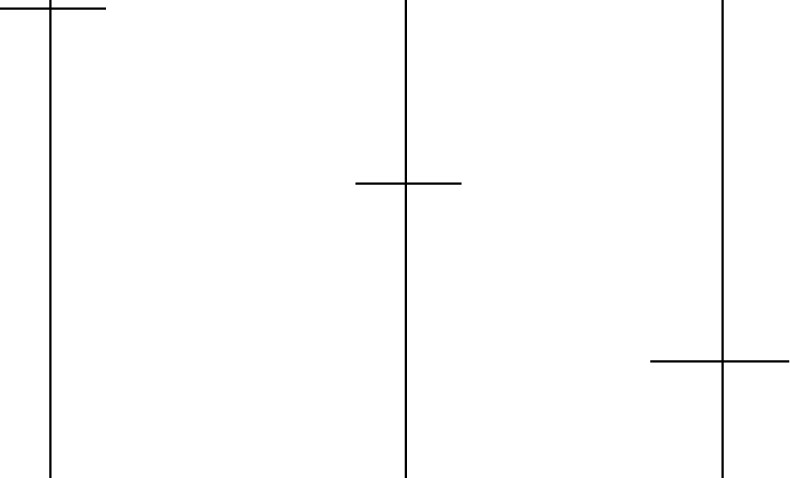The Bullish Dragonfly Doji
The doji is a type of candlestick pattern with variations and is created when the open and close are equal, so there’s essentially no stick on the candlestick. Dojis are almost all wick. Take a look at Figure 5-8, which includes a few different types of dojis. As you can see, a doji looks more like a cross or a t than a pattern on a candlestick chart.
|
Figure 5-8: A variety of dojis. |

|

Although there are several varieties of dojis, you can count on them all to be fairly frustrating for traders. For a doji to be created, a day must begin and end with the same price, so a whole lot of trading takes place, but when it’s all said and done, the price is right back where it started. Dojis are differentiated by the location of the open and close on the wick — where trading begins and ends on a given day.

Get Candlestick Charting For Dummies® now with the O’Reilly learning platform.
O’Reilly members experience books, live events, courses curated by job role, and more from O’Reilly and nearly 200 top publishers.

